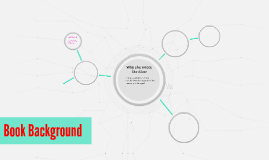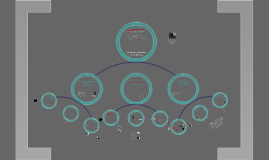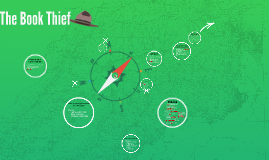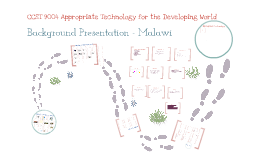Book Thief background information
Transcript: The Book Thief by Markus Zusak Liesel Meminger's life is changed when she picks up a book near her brother's grave. It is her first act of theivery. With the help of her foster-father, she learns to read and learns to love words. She continues to acquire books through her thieving ways--at a book-burning. When Liesel's foster family hides a Jew in their basement, the danger of stealing books is overshadowed by the danger of doing what is right. This story, told through the point of view of Death, gives a candid view of the world in Molching, Germany during WWII. Nope, Death states this is NOT how he/she looks. It is an unfortunate representation. Erase it from your memory. NOW!! Background Information of World War II The Rise of the Nazi Party 1918-1933 During the 14 years following the end of WWI, the Nazi party grew from a small political group to the most powerful party in Germany. Treaty of Versailles Peace treaty signed at Versailles between the allied powers (US, GB, France,) and Germany in which Germany was to accept responsibility for the war and pay heavy repairations totalling 31.5 billion dollars (equivelent to 442 billion dollars today). Adolf Hitler 1919: Series of emotional speeches leading to the German Workers' Party. German Workers' Party=German National Socialism=Nazism: Characterized by scientific racism, anti-Semitism; influenced by German nationalism, anti-communism, freikorps (volunteer mercenaries fighting the Weimar Republic); opposed to capitalism and communism; aimed to overcome social division, with all parts of a homogeneous society seeking unity and traditionalism; subscribed to racial hierarchy, Germanic Aryans being the master race; far-right politics based on martial law 1925: Wrote Mein Kampf (My Struggle)--Radical ideas of German nationalism--Might makes right--Rise of the SA (Stormtroopers/Brown Shirts) terrorizing--SS is an elite group within the SA. Elitism Additional Groups: Students, women, teachers, doctors, lawyers, and Hitler Youth Hitler Youth: Males aged 14-18, paramilitary, indoctrinated in anti-Semitism and viewed as furture "Aryan Supermen" Nazification 1933-1939 Once Hitler was appointed Chancellor and later Reichsfuhrer, the Nazi party quickly changed Germany's political, social, and economic structure. Hitler 1933: Appointed as Chancellor. 1934: President Hindenberg dies. Hitler proclaims himself Fuhrer and Reich Chancellor, the equivalent of President. Kristallnacht 1938: Germany takes over Austria and other German-speaking/Aryan portions of neighboring countries. Night of Broken Glass: Series of attacks on Austrian Jews November 9-10. Jewish homes and shops destroyed with sledgehammers and set on fire by Stormtroopers. 95 synagogues destroyed in Vienna alone, 1,668 in total. No event was so widely reported on while it was occuring--sent a shock wave around the world. THE BEGINNING OF THE HOLOCAUST! World War II 1939: Germany invades Poland. September 3: Britain and France declare war on Germany. World War II officially begins. 1940: Germany invades Denmark and Norway June 10: Mussolini joins forces with Germany September 27: Japan joins forces with Germany (1941: US enters the War after Pearl Harbor bombing on December 7.) Dachau: First Nazi concentration camp opened in Dachau, Germany in 1933, 51 days after Hitler took power. Upon liberation, 32,000 prisoners were found crammed in 20 barracks built for 250 people. Do the math . . . 1,600 were smashed in a space built for 250. (If you're math-impaired: There were supposed to be 12 people per barrack. At one time, they "fit" 80 people in each barrack.) Nazi Book Burning: April 6, 1933--taking action against the "un-German sprit" Well-known Nazi figures to speak. Students drafted "Twelve Theses" calling for a "pure" national language and culture. Students called it a response to a world wide "Jewish spear campaign" against Germany and German values. May 10: Burned upwards of 25,000 "un-German" books, including works by E. Hemingway, H. Keller, J. London, H.G. Wells. Also popularly burned: German-Jewish poet Heinrich Heine who wrote in 1820, "Where they burn books, they will in the end also burn people." Nuremberg Laws Anti-Semetic laws that classified people as Jews or Germans, then discriminated harshly against Jewish peoples in order to "safeguard the honor of the German people." Banning Jewish people from working in many professions from veterinarians to teachers to owning businesses Banning Jewish children from public schools Banning Jewish people from health spas Confiscating of Jewish property, like land and homes, and assets, including bicycles Restricting movement Ghettos (1939-1941) Confining Jews to ghettos Considered a transition area Filthy, poor sanitation, locked in Dehumanization The Camps: Concentration camps Forced labor camps POW camps 6 Extermination (Death) camps located in Poland Death Camps in Poland: 1. Chelmno 2. Treblinka 3. Sobibor 4. Belzec 5. Auschwitz-Birkenau 6. Majdanek Ration

















